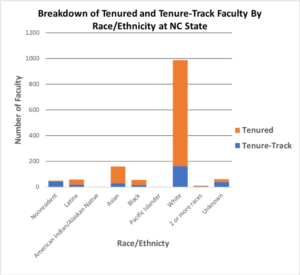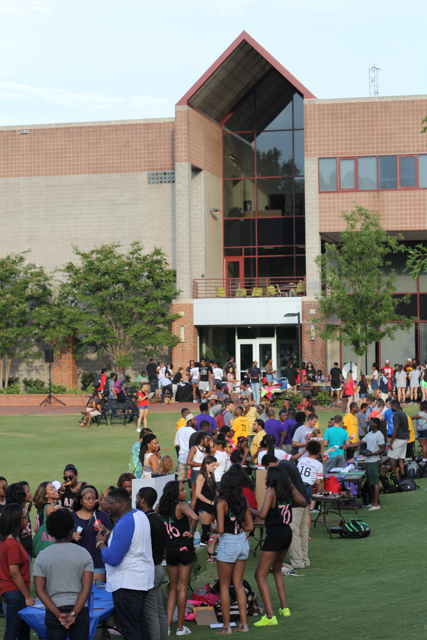Erin Elliot | Correspondent
With a reenergized push for representation surrounding the success of Black Panther, one can start to imagine what adequate representation would look like in the spaces we occupy on a daily basis. According to data reported to the National Center for Educational Statistics in 2016, NC State’s population was 33,755 in total.
African-American students, undergraduate and graduate combined, only made up 6% of that.
Similarly, in the same reporting year, NC State had 1,380 full time professors who were either tenured or tenure-track. Shockingly, 3% of all tenured men and about 5.5% of all tenured women identified as African American. For tenure-track faculty, the numbers were slightly higher, yet still alarming. African-American men represented a little under 4.5% of all tenure-track men while African-American women on the same track represented a total of 6.6%.

Source: Fall 2016 data from the National Center for Educational Statistics (NCES)
So are these numbers a big deal? Dr. Craig Brookins, an associate professor of psychology and Africana studies at NC State for the past 28 years said, “When people don’t see things that represent who they are, it effects how people understand what is possible. When faculty see themselves reflected in places of power and influence, it provides examples that matter.”
We as students of the pack should not only “think and do,” but we should also see our potential. As a student on campus, feeling like you belong is a powerful indicator of how likely you are to stay at a university or even graduate within six years.
Dr. Elan Hope, an assistant professor of psychology said, “The underrepresentation of black faculty at NC State is an extraordinarily important issue and a mirror of broader trends in higher education. This issue stems from the pipeline issue that is present in high school graduate rates, undergraduate enrollment and graduation, and graduate enrollment and persistence.”
Unfortunately, it seems as though most of the departments on campus are missing the mark at diversifying their faculty.
“I have only seen two black faculty in my entire department,” said Gwen Hopper, a second-year student studying chemistry. “It is important to see people who look like me in places that I want to go because it gives me encouragement that I can achieve.”
What happens to students’ beliefs about becoming successful in a profession when they aren’t able to see themselves in that field? Fifth-year student Camerian Williams said, “I started out here [at NC State], in a STEM field and I only saw one faculty of color. Now I am in CHASS… For me the representation is important. It is cool to have a black professor because I have never really had a black teacher even before I came to college. It shows that I can do this too.”
Dr. DeLeon Gray, assistant professor of educational psychology, said, “We can always increase our numbers. I am always going to advocate for faculty of color coming to NC State. I will never be satisfied with the number of students or faculty of color because diversity to me is the hallmark of a healthy organization.”
Dr. Gray’s sentiment reinforces the idea that, yes, we need to increase our numbers but it is also imperative that we find and recruit allies who will join us in this uphill battle. It is time that we stop filling seats and positions for the sake of the diversity. We need to change the system.
I asked Dr. Hope if we are doing anything as a university to retain the faculty that do come to NC State.
“There are some resources to support black faculty, but there may be room for improvement to increase representation on campus,” Dr. Hope said. “For instance, I hold a weekly writing group with black women faculty on the tenure-track so we have time dedicated to our scholarship. These types of spaces can be university supported, which will help attract and retain faculty of color.”
Faculty representation matters. A university with a commitment to social justice should reflect that in their staff and faculty. As people of color, we are not a homogenous group; we are quite the opposite. It is true that our stories may allow us to relate, and we may have experienced similar phenomenon. However, our identities deserve the respect of being more than just the only “one” in our departments and classrooms.



